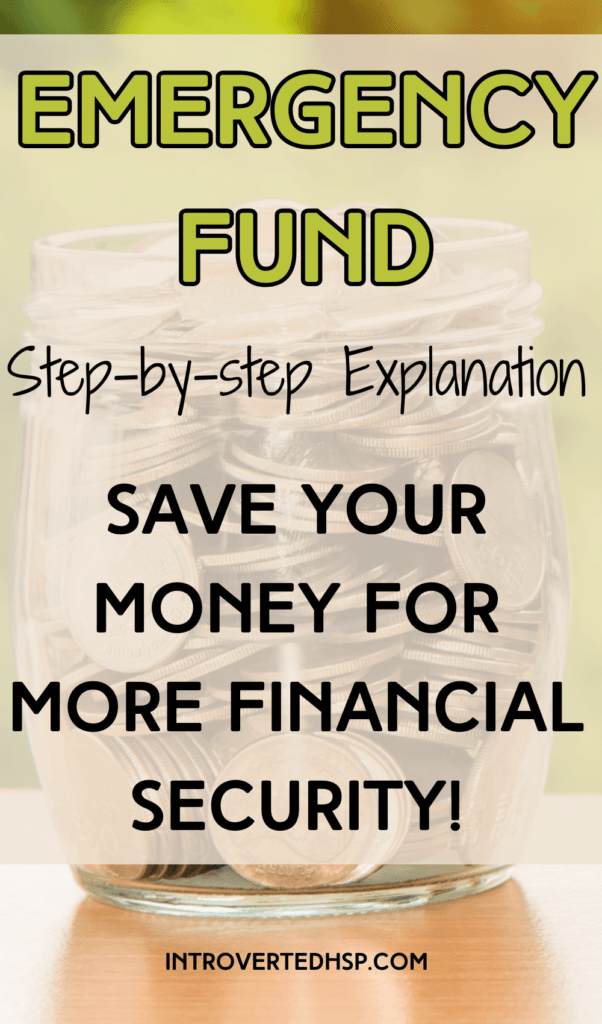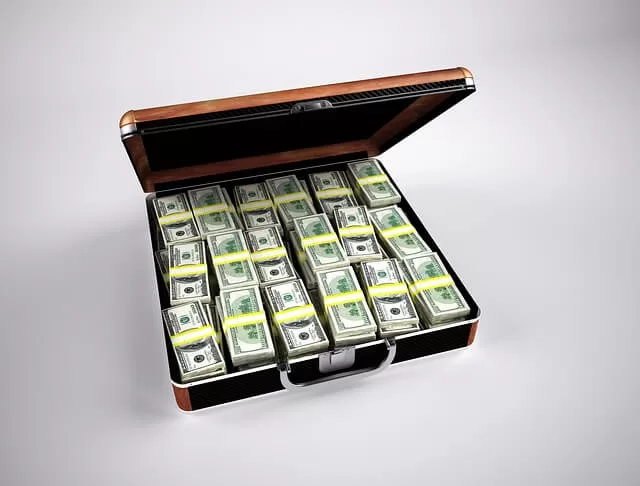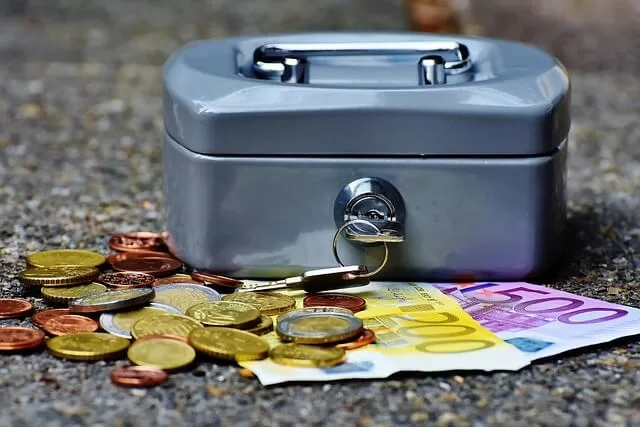Don’t you hate having big expenses you didn’t see coming until they’re there? They can mess up your budget and put you in debt if you don’t watch out. I’m talking about unexpected medical bills, your car breaking down, your pet getting sick, etc.
To prevent not having enough money for unexpected expenses, it’s best to build an emergency fund. A big pot of money to keep you financially safe for when an emergency happens to you.
In this blog post, I will explain what an emergency fund is, why it is so important to have an emergency fund, and how to start building and maintaining one.

This post may contain affiliate links, which means if you make a purchase through these links, I may receive a small commission at no extra cost to you. As an Amazon Associate I earn from qualifying purchases. Please read my disclosure for more info.
What is an emergency fund?
An emergency fund is a certain amount of money that you have saved to pay for emergencies only. It’s important to notice the words ’emergencies only’ in the previous sentence.
Running out of iced coffee, a planned medical procedure, yearly payments of your car insurance, or a planned vacation aren’t emergencies and you shouldn’t be using the money from your emergency fund to pay for those expenses.
Everything you know that is happening in the future and things you can save for beforehand are not emergencies. You can save for these big expenses in the future with sinking funds. This is a different type of saving.
The goal of an emergency fund is to always have some money available for when emergencies happen. How much money you need to build your emergency fund depends on your personal and family situation.
Why do you need an emergency fund?

Everyone, and I mean, everyone needs an emergency fund. There are no exceptions here unless you are filthy rich. We all need a financial buffer in case of emergencies.
The thing about emergencies is that you never expect them, so if you don’t have an emergency fund, you might not have some money available to use for those emergencies. Which can be a disaster!
An emergency fund can be your financial safety net in times of need, you will feel so much more financially secure when you build one and know that there will always be money available when times get rough.
Let me give you some examples of why you might need an emergency fund.
You’re working very hard as an employee and out of the blue, you’re getting fired because the company doesn’t have the money to keep you employed. Suddenly, you have a terrible toothache and if you want to get a root canal treatment or maybe even an implant and crown after they pull your tooth out, this will cost you a lot of money. Your 15-year-old car breaks down and you have no other way of getting to your work. Your pet gets very sick and you want to do whatever it costs to save your beloved little furry friend. These are all good examples of why you need to put some money aside in case emergencies happen.
Be smart, and start building your emergency fund today.
How to build your emergency fund

As an emergency fund is very different for everyone, I will give you some general guidelines.
How much money do you need?
Most people wonder how much money you need to have in an emergency fund. This varies greatly for every individual which makes sense because every situation is so different.
If you are single and are steadily employed at a company, you could save up to 3-6 months of your monthly expenses. When you are self-employed and more uncertain of your monthly income, you might want to increase it to 12 months of expenses covered.
When you have a family, your expenses will be higher so naturally you will need more money to be saved up in your emergency fund. However, you are likely to have multiple income streams so you will get there maybe even more quickly than a single person.
The basics are that you need to look at your monthly expenses and I would save at least 6 months in an emergency fund but if you are less risk tolerant, you should go up to those 12 months of expenses to feel more safe.
When you are thinking, there is no way that I can save up that big amount of money, set yourself a smaller goal so you won’t be too overwhelmed to even start building an emergency fund. Set a goal to create a smaller emergency fund, like a fund with 1000 dollars in it. This could be used for smaller types of emergencies and is less daunting to build because you will reach this goal a lot faster. And if you get there, why not keep going to get to a bigger emergency fund after all?
Where do you save this money?
You should save your money in a savings account where you can take it out whenever you need it. If possible, a high-yield savings account to help you grow this money as much as possible.
Make sure to check the regulations of the savings accounts, so that you can take out your money any time you need.
How do you build it?
You can build your emergency fund one step at a time or immediately deposit the entire amount of money if you have it available in your savings account.
If you have to build it from scratch, I think you should focus on putting most of your savings money into this fund, until it is fully funded. You can follow the 50/30/20 budgeting method and save 20% of your after-tax income.
Of course, other savings like saving for your pension or saving for a holiday are also important things to do but I would prioritize saving the most amount of money for your emergency fund while still saving some for other important goals.
The more you can contribute to your emergency fund every month, the faster it will be fully funded. When you have fully funded your emergency fund, you can stop putting money into it until you have to use some money for an emergency.
Always remember to fill it back up after you use some money out of it!
How to stay motivated

Saving for an emergency fund can be a not-so-fun savings goal for you. To keep motivated during this process, you could boost your motivation with trackers and make the savings more visible. If you can see the progress and you are moving towards your goal, it helps keep your motivation up.
There are plenty of savings trackers online to download for free. This blog post shares 11 free printable emergency trackers. You could also create your own if you are a bit creative with Canva.
Keep the tracker somewhere you can see it or add it to your budget planner to stay focused on your goal. You will thank yourself later for putting in the effort today.
Conclusion
Emergencies will happen to everyone, whether we like it or not. We can’t control many things in life, but we can manage our finances by being prepared as best as we can.
Start building an emergency fund today, so that you create a more financially secure future for yourself and your loved ones. Take it month by month and try not to lose hope if things go as fast as you would like. Just keep moving forward and you will get there eventually.
You will love having a financial buffer, it will give you more freedom and peace of mind to have an emergency fund in place.
